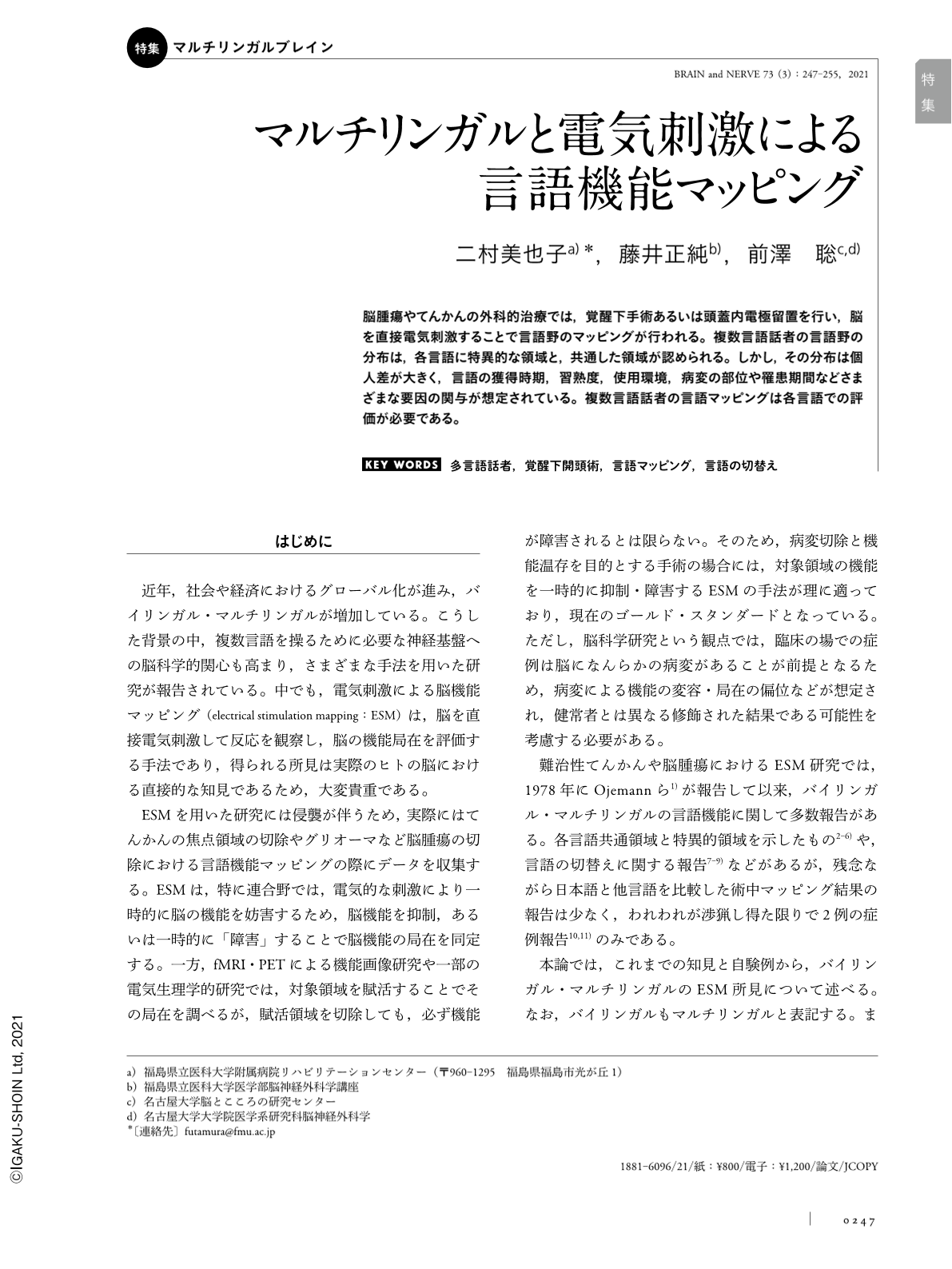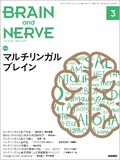Japanese
English
- 有料閲覧
- Abstract 文献概要
- 1ページ目 Look Inside
- 参考文献 Reference
脳腫瘍やてんかんの外科的治療では,覚醒下手術あるいは頭蓋内電極留置を行い,脳を直接電気刺激することで言語野のマッピングが行われる。複数言語話者の言語野の分布は,各言語に特異的な領域と,共通した領域が認められる。しかし,その分布は個人差が大きく,言語の獲得時期,習熟度,使用環境,病変の部位や罹患期間などさまざまな要因の関与が想定されている。複数言語話者の言語マッピングは各言語での評価が必要である。
Abstract
Language mapping is commonly practiced in brain tumors and epilepsy surgeries. It is done by direct electrical stimulation of the brain during awake craniotomy or by placing subdural electrodes on the brain's surface, or both. Studies of the language mapping in bi- or multi-lingual patients have concluded that they have both “language-specific areas,” in which symptoms are evoked upon stimulation in one specific language and not in the other languages, and “common areas” or “overlapping areas,” in which positive findings are evoked in all languages evaluated. The distribution of the pattern of language areas associated with each language, however, varies widely from patient to patient due to multiple factors such as the age of language acquisition, the language proficiency level, the amount of exposure to each language, the location of the lesions, the duration of the diseases, and other factors. Language mapping in bi- or multi-lingual patients should be done by screening all languages the patient speaks.

Copyright © 2021, Igaku-Shoin Ltd. All rights reserved.


